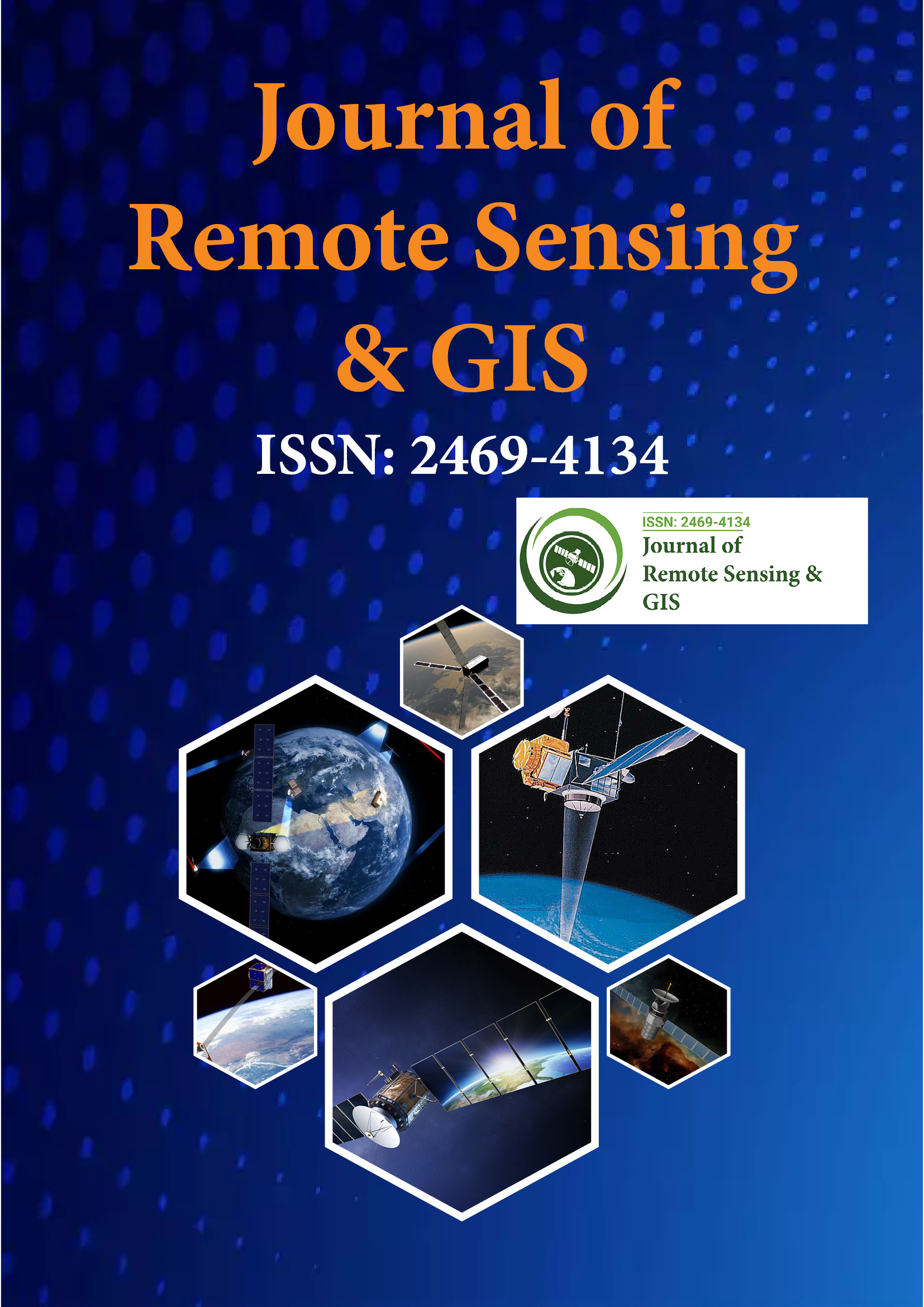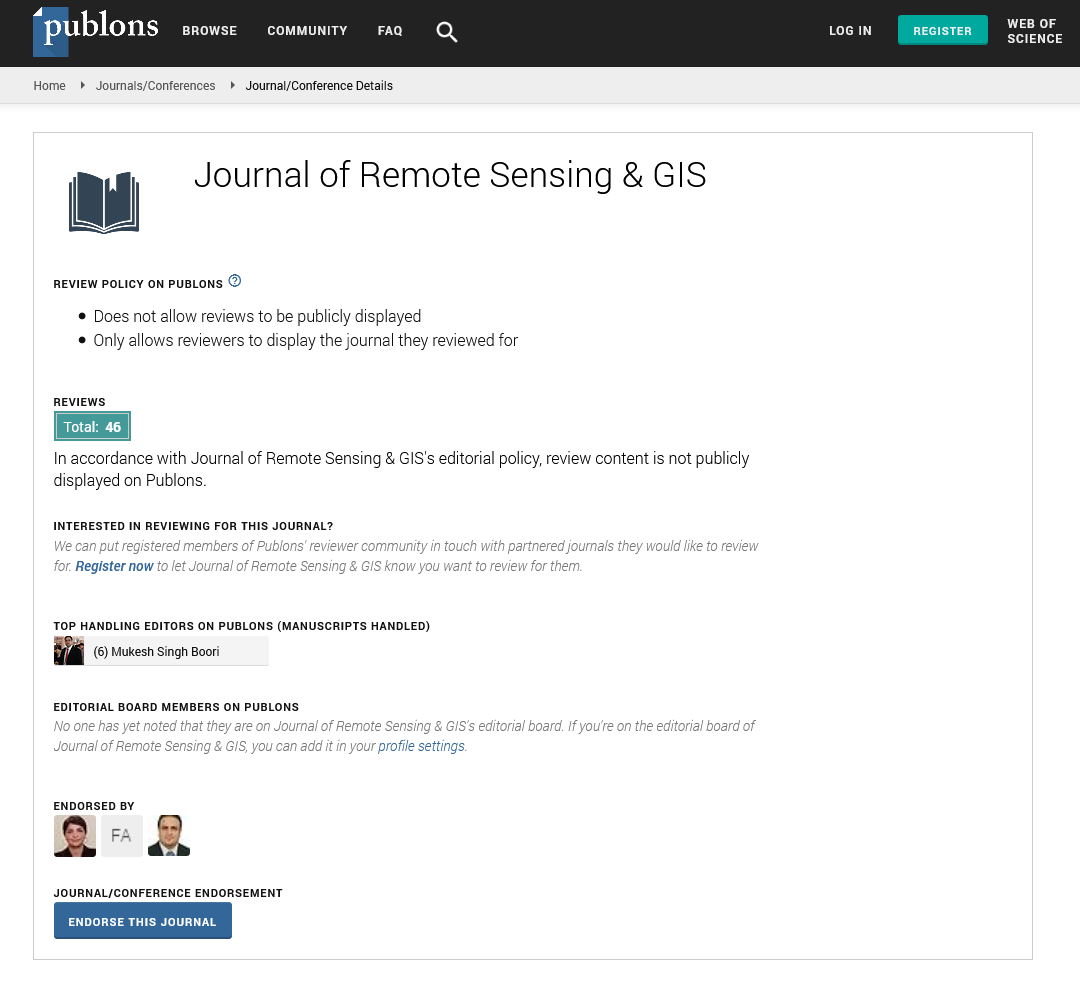Indexed In
- Open J Gate
- RefSeek
- Hamdard University
- EBSCO A-Z
- OCLC- WorldCat
- Publons
- International Scientific Indexing
- Euro Pub
- Google Scholar
Useful Links
Share This Page
Journal Flyer

Open Access Journals
- Agri and Aquaculture
- Biochemistry
- Bioinformatics & Systems Biology
- Business & Management
- Chemistry
- Clinical Sciences
- Engineering
- Food & Nutrition
- General Science
- Genetics & Molecular Biology
- Immunology & Microbiology
- Medical Sciences
- Neuroscience & Psychology
- Nursing & Health Care
- Pharmaceutical Sciences
Editor Note - (2021) Volume 10, Issue 12
A Brief Study of Radiometry Applications in Remote Sensing
Qiangqiang Yuan*Published: 29-Dec-2021
Radiometry is the science of measuring light rays of any wavelength, based on body measurements. Glowing energy cannot be measured directly and in volume, but should always be converted to other forms such as heat, electricity and chemistry. Radiometry applies to all electromagnetic spectrums, not just the optical spectrum. The terms used to describe the radiant energy in radiometry are summarized in Table 1. All the terms used in radiometry are defined in terms of strength. When certain values are considered a function of wavelength or frequency, the “spectral” adjective is used to correct a word, and the value symbol is followed by the appropriate spectral symbol, λ, v, or v¯, in brackets. When quantitative focus of quantity is considered, it is also defined by the spectral spectrum, but in this case the mark is registered with the appropriate spectral value; for example a bright spectral spectrum can be given as Wλ in units of W • m − 2 • μm − 1.
Radiometry is the science of measuring light in any part of the electromagnetic spectrum. In fact, the term is limited primarily to infrared, optical, and UV radiation using visual aids. Irradiance is the intensity of light, measured by water per square meter. Radiometry is the science of measuring light in any part of the electromagnetic spectrum. In fact, the term is limited primarily to infrared, optical, and UV radiation using visual aids. Irradiance is the intensity of light, measured by water per square meter Radiometry is the size of optical radiation, which is electromagnetic radiation within a variety of frequencies between 3 × 1011 and 3 × 1016 Hz. This species has a wavelength range of between 0.01 and a thousand micrometres (m m), and contains frequent so-called ultraviolet, visible and infrared properties. Two of the most common common gadgets encountered are watts / m2 and photons / sec-steridian.
Radiometry is a science and technology used to measure and measure the critical properties of electromagnetic fields. These include, for example, visible light, infrared and ultraviolet light, as well as radio waves and X-rays. In contrast to photometry, the appearance of radiation and its visible light are not important here. One is to focus only on the physical value, not the features of the human eye. radiometry provides a well-defined value as the basis for additional work. Different types of radiometer are designed to measure such values. Radiometry is usually a method of detecting radiation. All physical and material objects emanate in the form of electric waves according to Planck's Law. The frequency spectrum of those hot rays is determined, beyond the properties of blackbody, by emitting local pollution and body temperature. Also, its reflectivity and dissipation role.
To investigate the intensity of radiation and its apparent distribution, a person may determine the temperature and indicate the radiation body and its environment, all without distance. Radiometry is a collection of techniques for measuring electromagnetic radiation, including visible light. Radiometry in optics shows the distribution of radiation in the atmosphere, as opposed to photometry, which shows the interaction of light with the human eye. The basic difference between radiometry and photometry is that radiometry provides the entire spectrum of light rays, but photometry is limited to the visible spectrum. Radiometry differs from quantum technology such as photon calculations.
The use of a radiometer to measure the temperature of an object or gas by measuring the flow of light is called a thermometer. Portable pyrometer devices are often marketed as infrared thermometers.
Radiometry is important in astronomy, especially radio astronomy, and plays an important role in the distant hearing of the Earth. Measurement methods classified as radiometry in optics are called photometry in other astronomical applications, in contrast to the optical use of the term.

